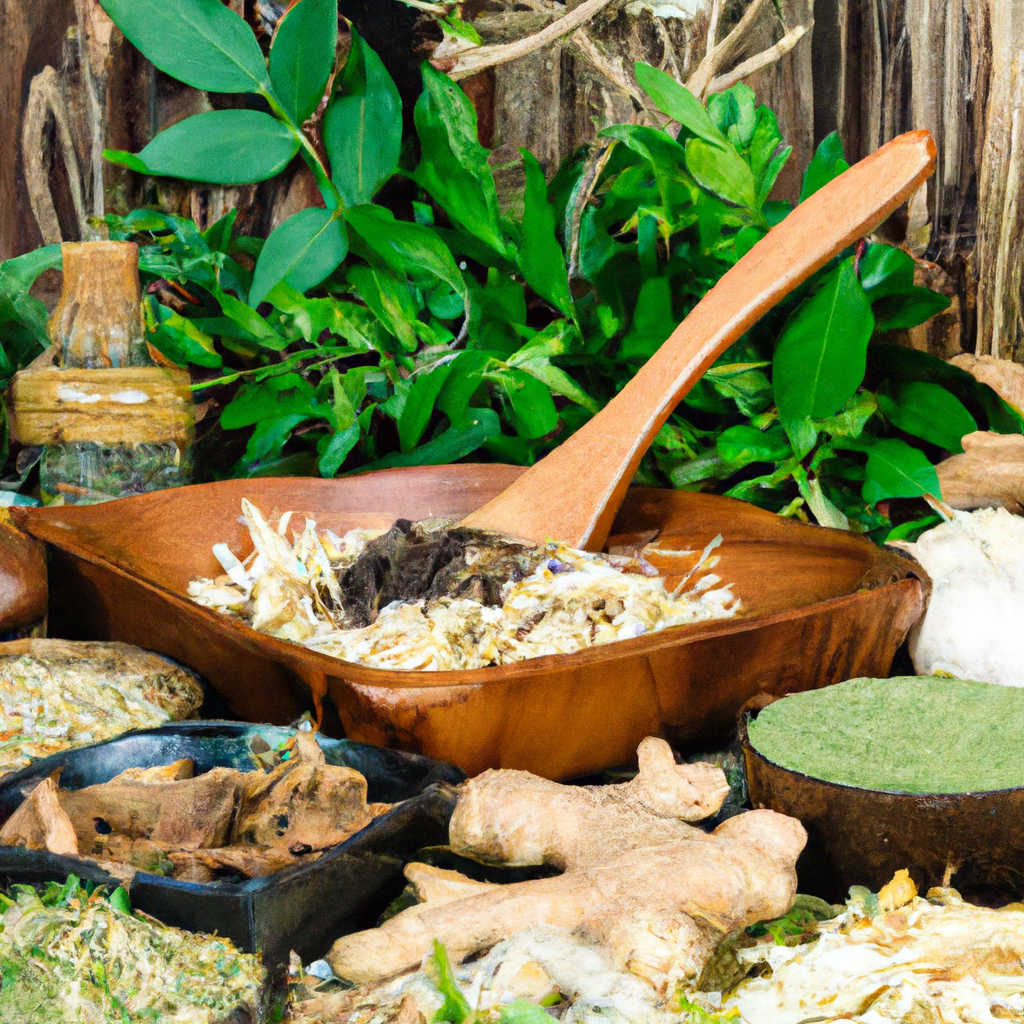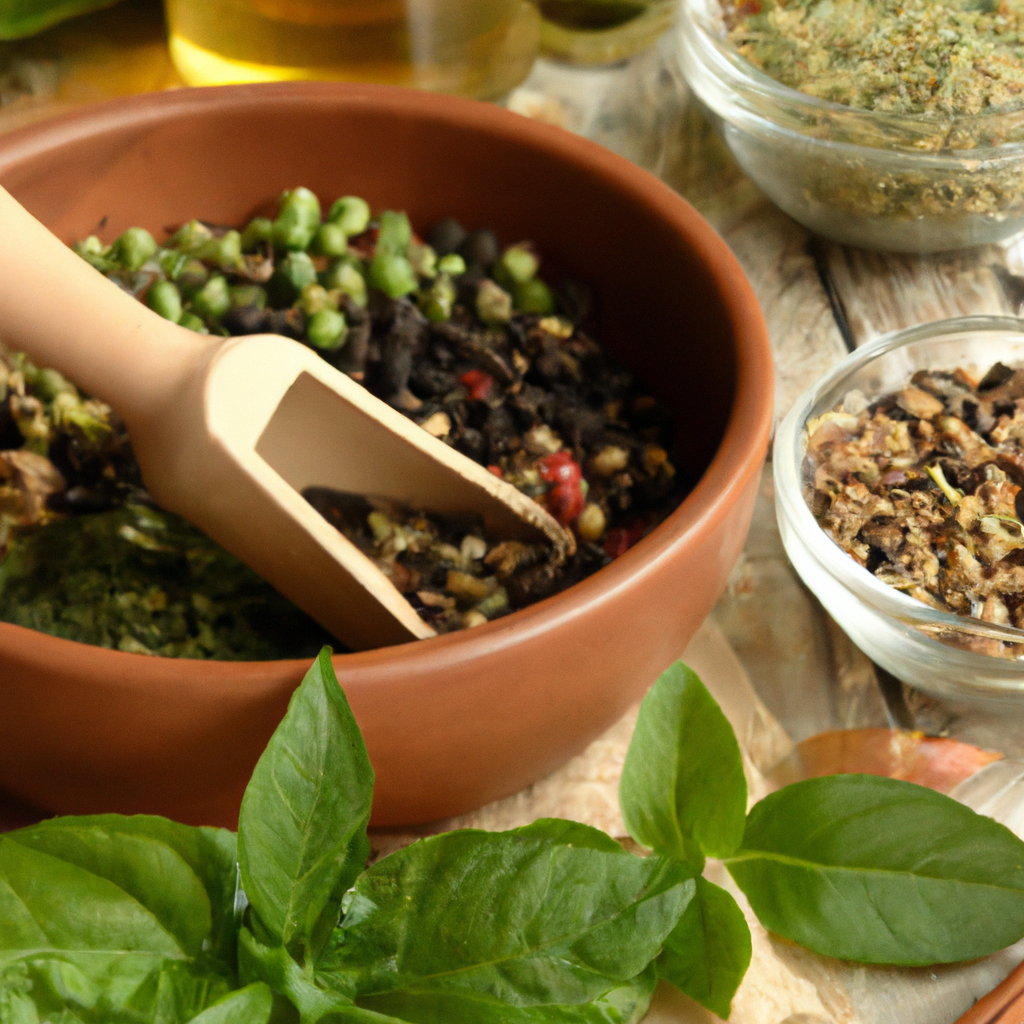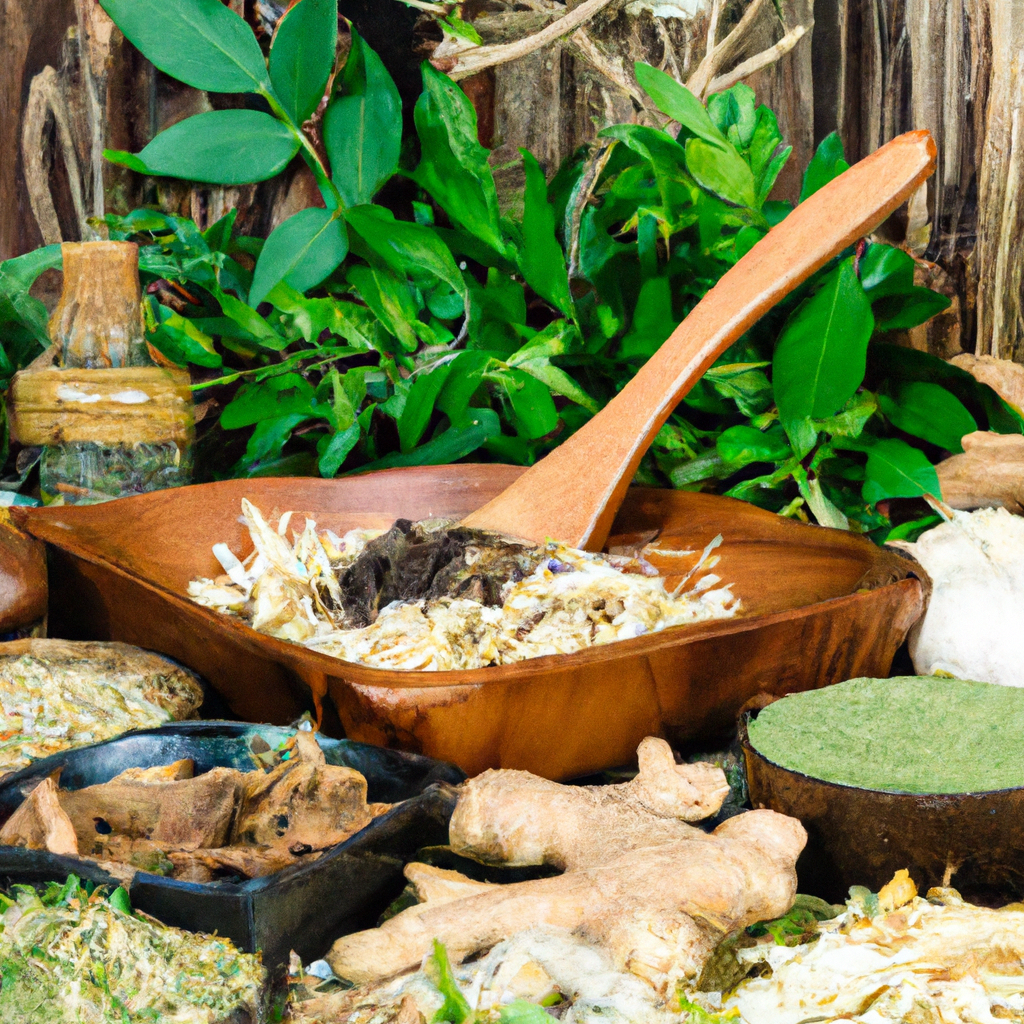Ready to embark on a journey into the captivating world of Traditional Thai Home Remedies? Brace yourself as we delve into the rich tapestry of folk medicine, unearthing remedies that have been passed down through generations. From the bustling cities of Thailand to the tranquil beaches, this article will transport you to a world where natural remedies reign supreme. Get ready to explore the enchanting realm of Thai herbal remedies and discover the wellness secrets that have stood the test of time. Whether you’re a tourist seeking unique experiences or a wellness enthusiast looking for alternative treatments, Traditional Thai Home Remedies has something in store for you. So, grab your metaphorical passport and let’s dive into the world of embracing folk medicine.

History of Traditional Thai Medicine
Traditional Thai medicine has a rich and fascinating history that dates back centuries. The practice is influenced by a combination of Ayurveda, the traditional medicine of India, and Chinese medicine. Over time, these influences merged with local Thai beliefs and practices to create a unique healing system.
Origins
The origins of traditional Thai medicine can be traced back to the ancient kingdom of Siam, which is now modern-day Thailand. It is believed that Thai medicine was originally practiced by Buddhist monks who used herbs and medicinal plants to treat ailments and promote overall well-being.
Influence of Ayurveda and Chinese Medicine
Ayurveda, a holistic healing system from India, played a significant role in the development of Thai medicine. The principles of Ayurveda, such as balancing the body’s doshas and the use of herbal remedies, were integrated into Thai healing practices.
Chinese medicine also left a lasting imprint on Thai medicine. Chinese techniques, such as acupuncture and the concept of energy meridians, were incorporated into Thai healing traditions. This blending of Ayurvedic and Chinese concepts resulted in a unique form of medicine that is practiced in Thailand to this day.
The Philosophy of Thai Healing
At the core of traditional Thai healing is the belief in the balance of four elements: earth, water, air, and fire. These elements correspond to different aspects of the body and must be in harmony for good health.
Balance of Four Elements
According to Thai healing philosophy, an imbalance of the four elements can lead to illness and disease. Each element is associated with certain organs and bodily functions. For example, earth represents stability and is linked to the digestive system, while water symbolizes fluidity and is connected to the circulatory system.
Thai healers use various techniques to restore balance to the elements, such as herbal remedies, massage, and energy work. By addressing the underlying imbalance, they aim to promote healing and overall well-being.
Energy Lines in the Body
Thai healing also places great emphasis on the body’s energy lines, known as Sen lines. These invisible pathways carry life force energy, or chi, throughout the body. When the flow of energy is blocked or imbalanced, it can result in physical or emotional discomfort.
Thai massage, a key component of traditional Thai healing, focuses on releasing blockages along the Sen lines. The practitioner uses pressure, stretching, and other techniques to stimulate the flow of energy and restore balance. This helps to alleviate pain, reduce stress, and improve overall health.
Key Concepts in Traditional Thai Home Remedies
Traditional Thai home remedies often utilize herbs and plants, as well as hot and cold therapy, to treat common ailments. These remedies have been passed down through generations and continue to be widely used in Thai households.
Herbs and Plants
Herbs and plants form the foundation of many Thai home remedies. Some commonly used herbs include ginger, turmeric, lemongrass, and holy basil. Each herb has unique properties and is believed to have specific healing benefits.
For example, ginger is known for its anti-inflammatory properties and is often used to ease digestive issues and reduce nausea. Turmeric is highly regarded for its antioxidant and anti-inflammatory effects, making it a popular remedy for joint pain and inflammation.
Hot and Cold Therapy
Hot and cold therapy is another key concept in Thai home remedies. It is believed that applying either heat or cold to affected areas can help to alleviate pain and promote healing.
Hot therapy, such as applying hot herbal compresses or soaking in a warm bath infused with herbs, is often used for muscle and joint pain. Cold therapy, on the other hand, is commonly used to reduce swelling and inflammation. This can be achieved by applying cold compresses or using ice packs.
Common Ailments and Thai Home Remedies
Thai home remedies are used to treat a wide range of common ailments, including digestive disorders, respiratory issues, and muscle and joint pain.
Digestive Disorders
Digestive disorders like bloating, indigestion, and constipation can be effectively treated with Thai home remedies. For example, drinking ginger tea or chewing on fresh ginger can help to relieve indigestion and stimulate digestion. Holy basil leaves, when brewed into a tea, are believed to assist with relieving stomach discomfort and promote healthy digestion.
Respiratory Issues
Thai home remedies offer relief for respiratory issues such as coughs, colds, and congestion. Lemongrass tea is a popular remedy for sore throat and cough, thanks to its soothing and antibacterial properties. Inhaling steam infused with eucalyptus oil can help to clear nasal congestion and ease breathing.
Muscle and Joint Pain
Muscle and joint pain are common complaints that can be effectively managed with Thai home remedies. Turmeric, mixed with warm milk or water, is believed to have anti-inflammatory properties that can reduce pain and swelling. Compresses soaked in a blend of herbs and heated before application can also provide relief for sore muscles and joints.

Herbal Combinations in Thai Remedies
Traditional Thai remedies often combine different herbs and plants to enhance their healing effects. Here are two common herbal combinations used in Thai medicine:
Turmeric and Ginger
The combination of turmeric and ginger is a powerful duo known for its anti-inflammatory and antioxidant properties. Together, these herbs can help reduce pain and inflammation, boost the immune system, and improve digestion. Turmeric and ginger can be consumed in various forms, such as teas, soups, or added to dishes.
Lemongrass and Kaffir Lime
Lemongrass and kaffir lime are frequently paired together in Thai remedies for their refreshing and antibacterial properties. Lemongrass tea, made from steeping fresh or dried lemongrass leaves, is a popular remedy for digestive issues, colds, and fevers. The zest of kaffir lime is often added for an extra burst of flavor and health benefits.
Traditional Thai Massage as a Healing Practice
Traditional Thai massage, also known as Nuad Thai or Thai yoga massage, is a holistic healing practice that combines elements of acupressure, yoga, and energy work. It has a long-standing history in Thai culture and is considered an integral part of traditional Thai medicine.
Ancient Techniques
Thai massage techniques have been passed down through generations and are deeply rooted in ancient healing traditions. Practitioners use their hands, elbows, knees, and feet to apply pressure and perform stretches along the body’s energy lines. The massage is often performed on a floor mat, with the recipient wearing loose and comfortable clothing.
Benefits for Wellness
Thai massage offers numerous benefits for overall wellness. It can improve flexibility, relieve muscle tension, reduce stress and anxiety, and promote relaxation. The combination of stretching and acupressure helps to release blocked energy and restore balance to the body, facilitating healing and promoting a sense of well-being.
Thai Herbal Compress Therapy
Thai herbal compress therapy, also known as Luk Pra Kob, is a traditional healing practice that dates back centuries. It involves the application of heated herbal compresses to various parts of the body to promote relaxation, relieve muscle tension, and support overall health.
Preparation and Ingredients
The herbal compresses used in Thai herbal compress therapy are made by blending a variety of medicinal herbs and plants. Common ingredients include lemongrass, turmeric, ginger, kaffir lime, and camphor. These herbs are wrapped tightly in a cloth, steamed or heated, and then applied to the body.
Benefits for the Body
Thai herbal compress therapy offers a range of benefits for the body. The combined effects of heat and herbal properties can help to improve blood circulation, alleviate muscle and joint pain, reduce inflammation, and detoxify the body. The aromatic nature of the herbs also enhances relaxation and promotes a sense of well-being.
Thai Kitchen Remedies
In addition to using herbs and plants, Thai home remedies often make use of common kitchen ingredients and spices to promote health and well-being.
Use of Spices for Health
Spices are not only known for their flavor but also their health benefits. Thai cuisine incorporates a wide range of spices, such as turmeric, ginger, garlic, and chili. These spices are believed to have various therapeutic properties, including anti-inflammatory, antioxidant, and digestive benefits. By incorporating these spices into their everyday cooking, Thai people naturally incorporate health-promoting elements into their diets.
Common Kitchen Ingredients as Remedies
Apart from spices, many common kitchen ingredients are used as natural remedies in Thai culture. For example, honey is often used to relieve coughs and soothe sore throats. Garlic is believed to have antibacterial properties and is used to boost the immune system. Coconut oil is used for its moisturizing and healing properties, both externally and internally.
Traditional Healing Practices in Thai Culture
Traditional Thai medicine and healing practices are deeply ingrained in Thai culture, and various rituals and beliefs are still upheld today.
Shrines and Offerings
Thailand is known for its ornate and elaborate shrines, which are often adorned with offerings of flowers, fruits, and incense. These shrines are dedicated to various deities and spirits, and people often visit them to seek blessings, protection, and healing. Traditional Thai healers may perform rituals at these shrines as part of their healing practice.
Traditional Medicine Men and Women
Within Thai communities, there are often respected individuals known as traditional medicine men or women. These individuals possess extensive knowledge of traditional healing practices and are sought after for their wisdom and expertise. They carry on the traditions and techniques passed down through generations and play a vital role in the preservation and continuation of traditional Thai medicine.
The Influence of Traditional Thai Medicine Today
Traditional Thai medicine continues to have a significant influence on healthcare practices in Thailand and beyond.
Integration with Modern Healthcare Systems
In Thailand, traditional Thai medicine is recognized and integrated into the national healthcare system. Traditional practices, such as Thai massage and herbal medicine, are offered alongside modern medical treatments. Many Thai hospitals and clinics have departments dedicated to traditional medicine, allowing patients to benefit from a holistic approach to healthcare.
Conservation and Preservation Efforts
Efforts are being made to preserve and conserve traditional Thai medicine and healing practices. Organizations and institutions are working to document and research traditional remedies, techniques, and knowledge. This ensures that future generations will have access to this valuable cultural heritage and enable practitioners to continue providing effective care to those in need.
In conclusion, traditional Thai medicine has a long and rich history that continues to be woven into the fabric of Thai culture. Influenced by Ayurveda and Chinese medicine, Thai healing practices focus on balancing the body’s elements and energy lines. Utilizing herbs and plants, hot and cold therapy, and various techniques such as massage, Thai people have embraced the power of folk medicine for centuries. With its numerous benefits for physical and emotional well-being, traditional Thai medicine remains an integral part of Thai culture and an increasingly recognized practice in modern healthcare systems around the world.
